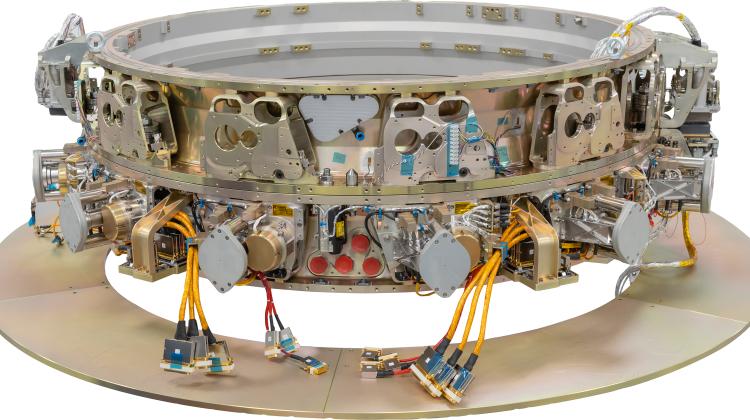Polish company develops solution to improve safety of manned space missions
 SENER HCS. Credit: SENER Polska
SENER HCS. Credit: SENER Polska
An important part of the Hard Capture System (HCS) that ensures the safety of astronauts has been developed in Poland. The purpose of the system is to provide a rigid connection between structures in order to allow for a pressurized passageway between two spacecrafts, SENER Polska reports. Its engineers developed the technology.
SENER Aeroespacial, as part of an international consortium, has developed the Hard Capture System (HCS) for the IBDM (International Berthing and Docking Mechanism) that allows both large and small spacecraft to berth and dock..
The purpose of HCS (the system developed by SENER Polska in collaboration with its parent company SENER Aeroespacial) is to provide a rigid connection between structures in order to allow for a pressurized passageway between two spacecrafts. In addition, it can be used as a service connection and a standard and emergency way to separate space vehicles. In practice, this system will guarantee the safety of astronauts crossing over from ship to ship, and a safe transfer of stocks and materials, for example from a spacecraft to a space station.
The SENER Polska team was responsible for key components of the system. 'Our team's tasks included design, implementation, integration and testing of Separators, Resource Transfer Umbilical, MMOD (Micrometeoroid Orbital Debris) cover, and two types of sensors: Ready To Hook Sensor (RTH) and Undocking Complete Sensor (UCS)', says Łukasz Pobęska, SENER Polska project manager, quoted in a press release.
The IBDM is compatible with the International Docking System Standard (IDSS) the ISS International Docking Adapters (IDA) on the US side of the International Space Station (ISS). The possibility of modifying the system to accommodate new docking standards has been taken into account during the project phase, so it has the required flexibility to allow the integration of the IBDM into different vehicles. This extremely precise and complex system may become a standard for manned space missions in the future, we read in the press release.
One of its potential applications is in the successor of the International Space Station, the Gateway station, whose construction is planned for 2025. Ultimately, Gateway will be placed in space around the Moon and serve as a strategic point for distant space expeditions, such as a manned flight to Mars. Part of it will be the I-HAB, a habitat for astronauts arriving from Earth, developed by ESA member companies. I-HAB is expected to be equipped with the HCS system developed by SENER.
PAP - Science in Poland
ekr/ agt/ kap/
tr. RL
Przed dodaniem komentarza prosimy o zapoznanie z Regulaminem forum serwisu Nauka w Polsce.















